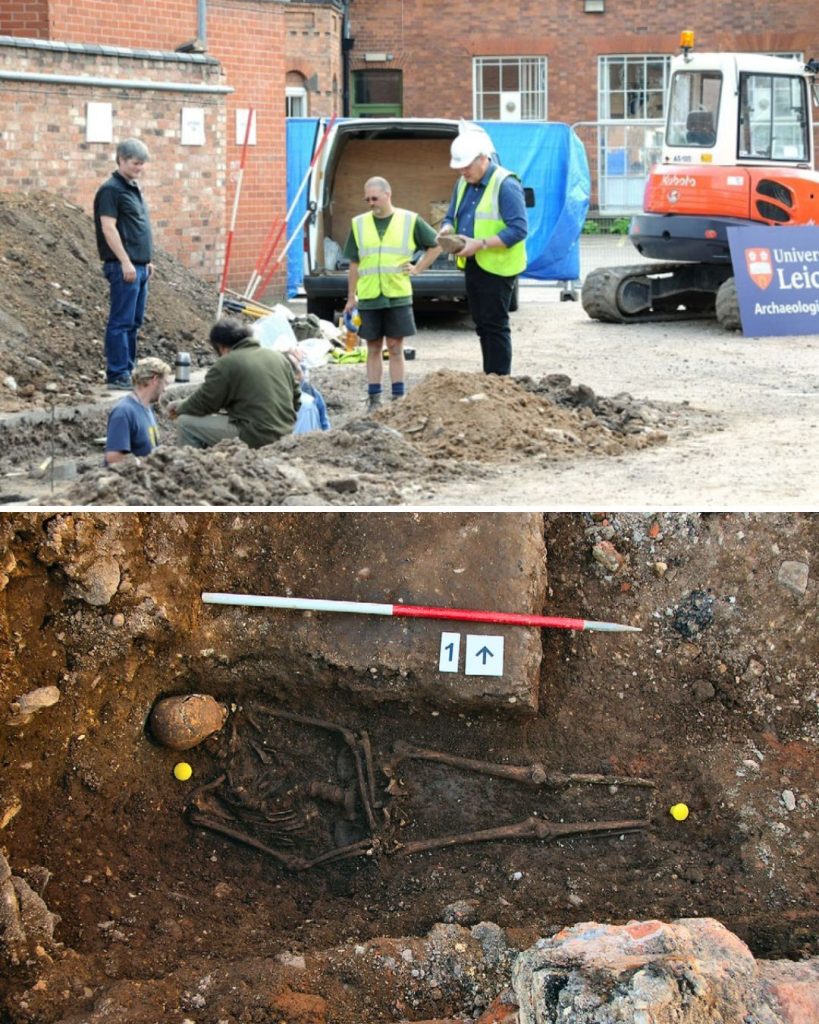In the world of archaeology, some discoveries do more than uncover ancient bones—they reshape our understanding of history itself. One such moment occurred in 2012 when Phillipa Langley, a determined amateur historian and screenwriter, accomplished what many believed to be impossible: the discovery of the lost grave of King Richard III beneath an unassuming car park in Leicester, England. This extraordinary find not only solved a centuries-old mystery but also invited a reevaluation of one of England’s most controversial monarchs. The journey from myth to reality, from legend to fact, was a remarkable testament to the power of persistence, scientific inquiry, and public interest in reclaiming the truth about the past.

For centuries, the final resting place of King Richard III had remained unknown, shrouded in mystery and folklore. As the last English king to die in battle, Richard III’s death at the Battle of Bosworth Field in 1485 marked the end of the Plantagenet dynasty and the beginning of Tudor rule. Historical records indicated he had been buried at Greyfriars friary in Leicester, but after the friary was dissolved during the Reformation, the location of his grave was lost to time. Some believed his remains had been thrown into the River Soar, while others speculated they lay somewhere beneath modern Leicester. For Phillipa Langley and the Richard III Society, these unresolved questions became a call to action.
The search for Richard III’s grave was no small undertaking. Inspired by a deep fascination with the king and supported by the Richard III Society, Langley spearheaded the “Looking for Richard” project. Her commitment led her to a car park owned by the Leicester City Council, located on the former site of Greyfriars friary. Remarkably, a 1975 academic article had already hypothesized that Richard’s remains might be buried in that exact location. After years of planning, fundraising, and gaining the necessary permissions, excavation finally began in August 2012.
What followed was nothing short of astonishing. On the very first day of digging, archaeologists unearthed a human skeleton. The remains displayed several key characteristics that raised immediate interest. Most strikingly, the skeleton had severe scoliosis, a curvature of the spine that would have given the individual a distinctive posture—echoing historical descriptions of Richard III, who was often portrayed as physically deformed by Tudor propagandists. In addition, the bones bore multiple signs of trauma, consistent with injuries sustained in battle. The individual’s age at death was also consistent with Richard III’s age when he was killed—32 years old.
Still, speculation alone could not confirm the identity of the remains. Over the following months, scientists conducted a battery of tests to determine whether they had, in fact, found England’s long-lost king. The first breakthrough came through DNA analysis. By tracing the maternal line from Richard III’s sister, Anne of York, scientists were able to identify living descendants whose DNA could be compared to the skeleton’s mitochondrial DNA. The match was definitive. Further osteological examination revealed detailed evidence of battle wounds, including fatal injuries to the skull inflicted by bladed weapons—consistent with accounts of Richard’s death on the battlefield. The combination of DNA evidence, physical characteristics, and forensic analysis left little doubt: the skeleton was indeed that of King Richard III.
This discovery had enormous historical and cultural implications. Not only had archaeologists confirmed the resting place of a king lost for over 500 years, but they had also provided a rare opportunity to study a figure whose life and legacy had been deeply distorted by time, propaganda, and Shakespearean drama. Richard III’s death in 1485 signaled the end of the Wars of the Roses—a series of civil wars fought between the rival houses of York and Lancaster—and ushered in the Tudor era. His brief reign, lasting just over two years, was marked by significant, if often overlooked, accomplishments.
Among Richard III’s achievements was the introduction of laws written entirely in English for the first time, an important shift toward making legal matters more accessible to the public. He also worked to reconcile the divided factions of Yorkists and Lancastrians and concluded a truce with Scotland—efforts that reveal a more complex and thoughtful ruler than the villainous caricature often depicted in literature.
After rigorous scientific confirmation, a decision was made regarding Richard III’s final resting place. On March 26, 2015, in a nationally televised memorial service, his remains were reinterred with full honors in Leicester Cathedral, just a short distance from where they had been found. His tomb, now a site of historical pilgrimage, stands as a powerful symbol of rediscovery and remembrance, drawing visitors from around the world to reflect on a monarch whose story was literally buried beneath centuries of urban development.
The legacy of Richard III’s rediscovery goes far beyond the excitement of the archaeological find. It underscores the importance of historical scholarship, the value of persistent inquiry, and the role of science in shedding light on the past. For historians, archaeologists, and the general public alike, the unearthing of Richard III’s grave serves as a reminder that history is not static—it evolves as new evidence comes to light, challenging our assumptions and enriching our understanding of those who came before us.
In the end, Phillipa Langley’s remarkable achievement and the tireless efforts of the Richard III Society brought one of history’s great mysteries to a close. The story of Richard III, from battlefield to car park, and ultimately to a place of honor in Leicester Cathedral, continues to inspire and captivate, offering not only a deeper appreciation for England’s medieval past but also a shining example of how the pursuit of truth can rewrite history in the most unexpected ways.





